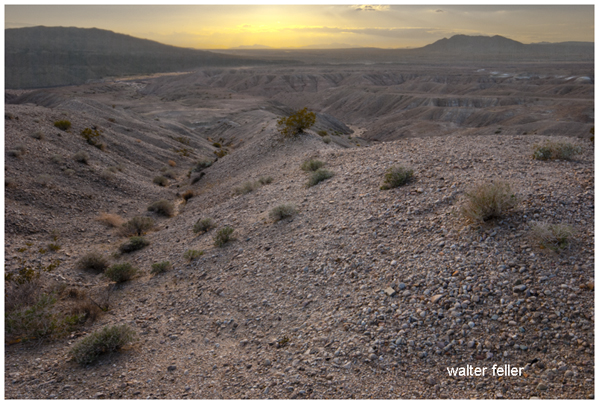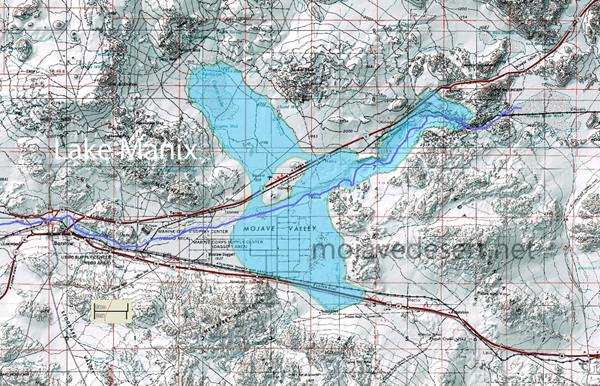--
Lake Manix

History of Ancient Lake Manix
Ancient Lake Manix was the most important feature of the Mojave Desert during the late Pleistocene era, starting from about 25,000 up to 15,000 years ago. The climate during those times was cooler and more moist than today; thus, it supported a succession of large lakes that ended across the region. One of these included Lake Manix. This lake was created when the Mojave River from the San Bernardino Mountains entered the deserts in the south. The course of this river was obstructed by a natural barrier, which may be volcanic or tectonic in origin, thus filling a basin.The early activities of human beings in this region were heavily influenced by this lake. From an archaeological point of view, it can be established that early inhabitants required the lake and its surroundings for basic needs of water, food, and materials for making tools. As Lake Manix began to dry up during the Holocene period, roughly between 14,000 to 10,000 years ago, it reflected the broader climatic change toward aridity that eventually gave rise to the Mojave Desert as we know it today. It was a time when this ancient lake system went through its conversion into a desert.
The major event in the history of Lake Manix was its eventual breach, around 14,000 years ago. When the natural dam holding the water gave way, it drained through Afton Canyon, carving the present Mojave River channel as it came out. It left behind telltale signs in shoreline terraces, fossils, and sediment deposits.


Geology of Ancient Lake Manix
The geology of Ancient Lake Manix is essentially an overview of the tectonic and volcanic history of the region. The lake essentially filled a large depression within the Mojave Desert, shaped by faulting and associated tectonic activity with the San Andreas Fault system. Natural dam formation creating the lake may have resulted either from tectonic uplift or by way of volcanic material impeding the flow of the Mojave River. As it grew to its maximum size and then retreated over time, it left behind some fairly dramatic geological markers.Some of the key features of the Lake Manix area include:
Shoreline Terraces:
The lake level rose and fell with changing climates and tectonic activity, leaving behind a series of terraces-those distinct steps in the landscape that mark the ancient shorelines. You can see these terraces today around the old lakebed, especially up around the Barstow-Afton area.Sedimentary Layers:
Massive layers of sediment, which have been deposited over a large number of years, prove the presence of the lake. These vary from fine-grained silt and clay during calm lake conditions to coarser materials coming from flooding or river inflows. Such sediments contain fossils of flora, fauna, and aquatic life that lived during the time, which helps scientists reconstruct the environment of the time.Fossils:
These lake sediments were rich in fossil remains of extinct mammals like mammoths and other large-bodied megafauna of the Pleistocene Era. Other fossilized remains of fish and mollusks also bear evidence that Lake Manix once had a very productive freshwater environment.Afton Canyon has been described as the "Grand Canyon of the Mojave" and represents the catastrophic breach in the drainage of Lake Manix. The breach cut deeply into the landscape, leaving behind towering canyon walls that expose a section of sediment deposited by the lake over time. This section now serves as a geological record of the lake's existence and its eventual demise.
Ancient soils and spring deposits around the lake bed indicate a wetter climate. Remnants of ancient soils and spring deposits around the lakebed indicate a wetter climate. Such features hint at lush vegetation, springs, and wetlands around Lake Manix, providing a very rich resource base for early humans and wildlife alike.
The disappearance of Lake Manix represents an important development in the geological history of the Mojave Desert, through which climate and geological processes outlined the landscape we see today. Its remnants still can be seen in features such as dry lakebeds, ancient shorelines, and canyons that continue to tell its story.
Ancestral Mojave River
Troy Lake
Afton Canyon
Oakland Tribune, Feb 28, 1914